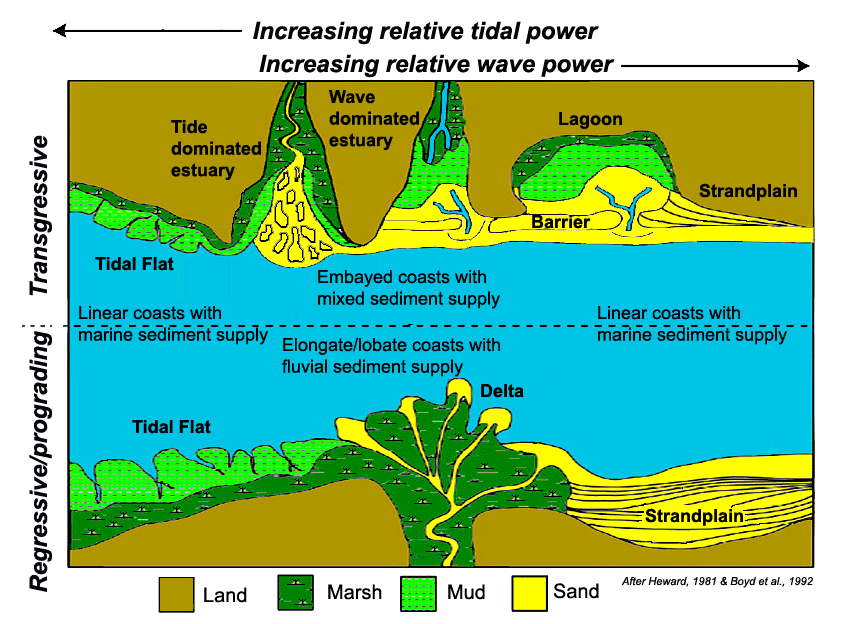|
aggradation
aggradational parasequence set
bedsets
boundaries
boundaries bounding surfaces
diachronous
marine flooding surface
maximum flooding surface (mfs)
parasequence
parasequence - clastic beach
parasequence - delta
parasequence - stacked beaches
parasequence - tidal flat
parasequence set
progradation
progradational parasequence set
shoreline
sequence
regression
regressive surface of erosion
regressive systems tract
retrogradation
retrogradational parasequence set
sequence
stacking patterns
systems tract
transgressive surface
transgressive systems tract
Walthers Law

|

Figure 5 above is associated with the exercises on high frequency clastic parasequences.Note the hierarchy of sedimentary structures and their association, from seaward to landward, with the different depositional systems that are listed in Table below. The vertical and lateral relationships seen here are intended to demonstrate the basis of Walther's Law.
|
setting
|
effect of waves and tide
|
|
|
|
tidal zone, subject to storm wash-over
|
trough-cross bedded fill of tidal inlets, estuary and fluvial channels
rooted seat earths and coals |
|
foreshore and upper shoreface
|
zone of breaking waves and swash zone
|
trough-cross stratified sandstone sometimes overlain by planar-cross bedded sandstone
|
|
lower shoreface and delta-front sandstones
|
|
|
|
transition between offshore shelf and lower shore-face
|
between storm wave-base & fair-weather wave-base
|
alternations of hummocky cross-stratified sandstone
highly burrowed silty mudstones |
|
offshore shelf
|
below storm wave-base
|
|
Table of the relationship between sediments of a clastic shoreline depositional setting to tide & waves, and sedimentary structures.

|